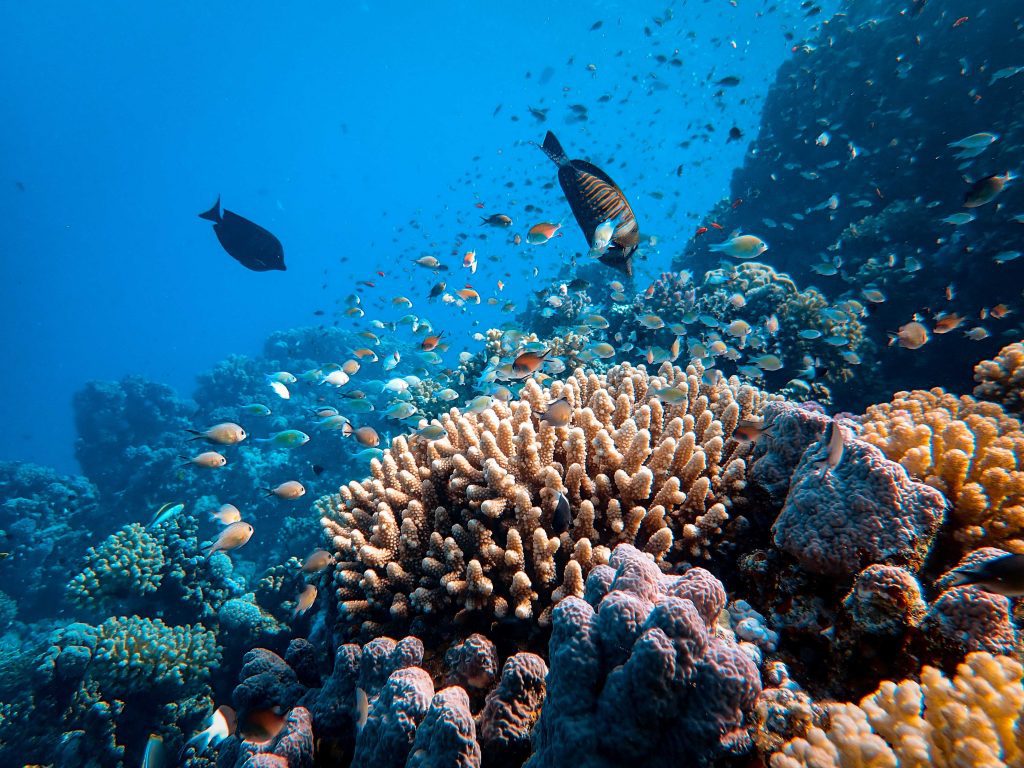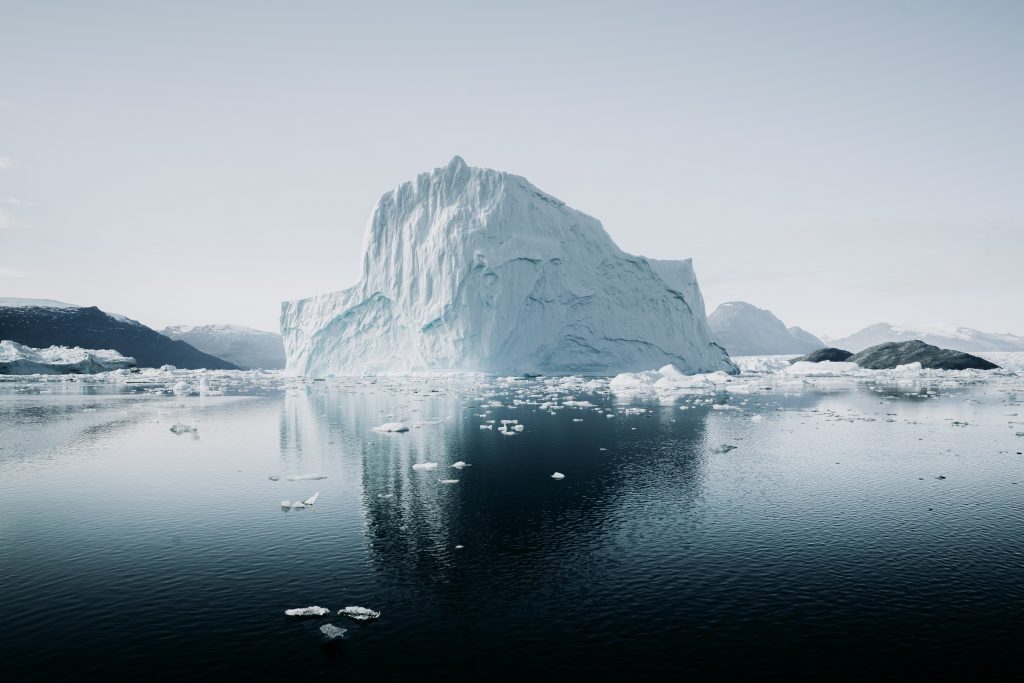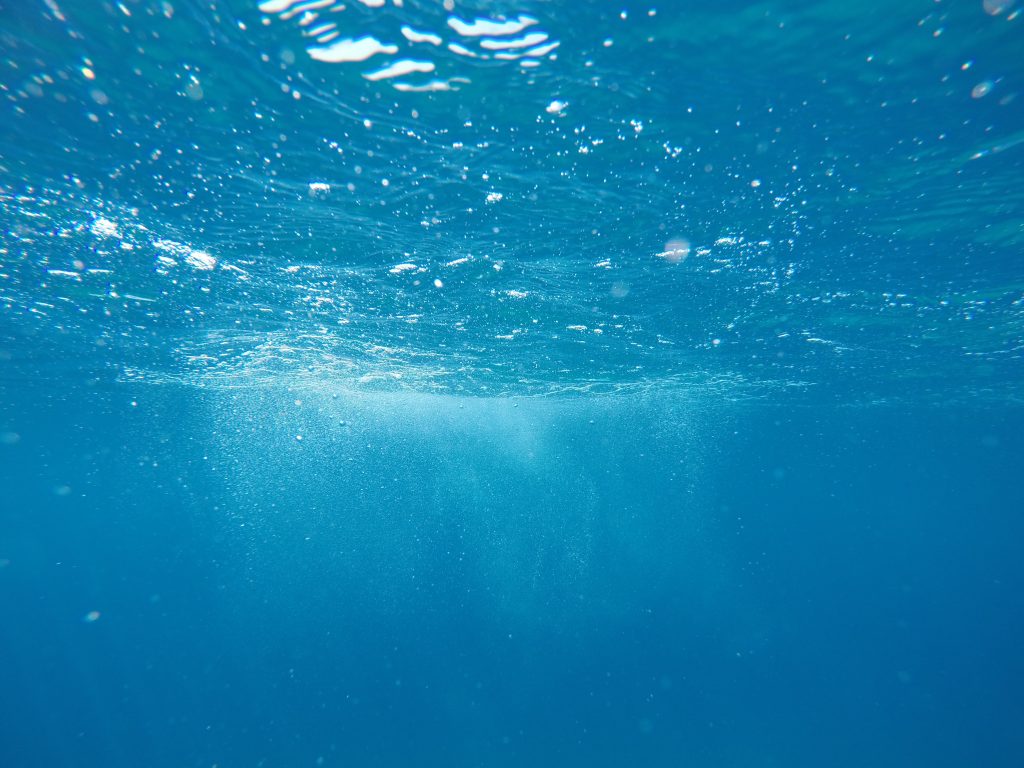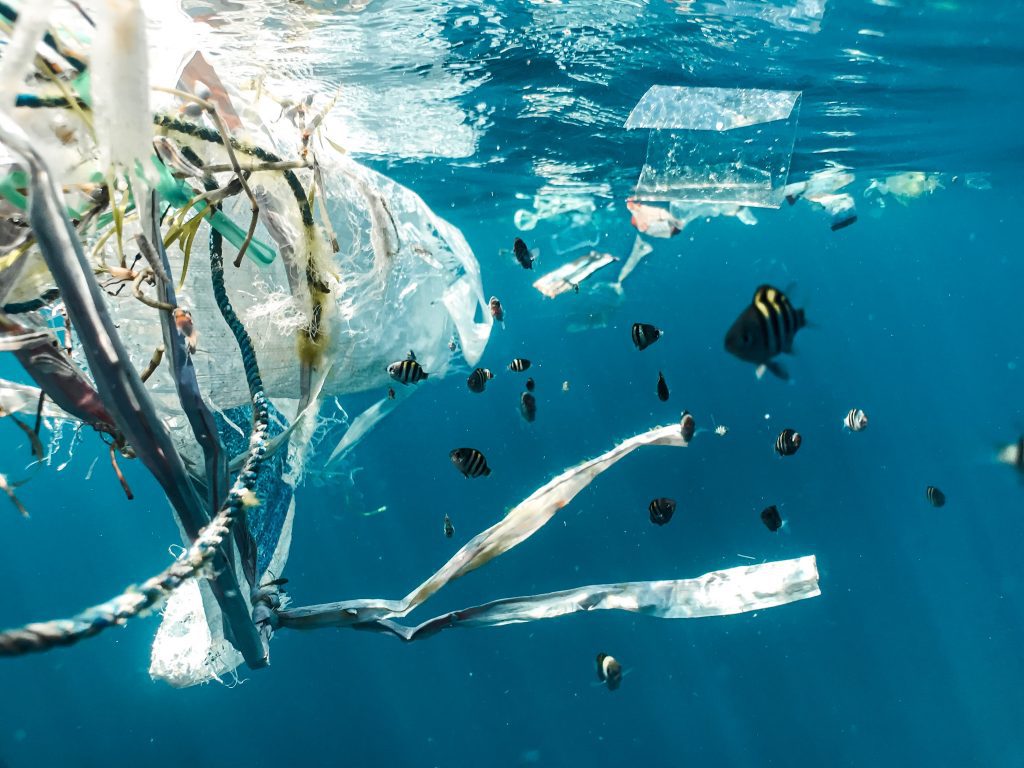Home to millions of plants and animals, the ocean is a very large part of our planet, covering more than 70% of the Earth’s surface. It plays a crucial role in our survival and is a source of food and income for millions.
In this section, you will find why it is important to protect & restore this precious ecosystem. I’ll conclude with examples of climate action.
The ocean’s role in absorbing the extra heat
The oceans and seas absorb more than 90% of the extra heat (additional greenhouse gas effect due to human activities such as the burning of fossil fuels & deforestation), causing ocean temperatures to rise.

Ocean water is constantly evaporating, increasing the temperature and humidity of the surrounding air to form rain and storms. Warmer oceans mean that storms are more severe, and cyclones and hurricanes become more powerful.
The ocean doesn’t just store solar radiation; it also helps to distribute heat around the globe through ocean currents: movements of ocean water in a continuous flow.
The increase in ocean temperatures poses a significant threat to coral reefs and marine biodiversity.
Coral reefs are affected by increasing temperatures which cause coral bleaching and increase their risk of mortality. Researchers are seeking ways to preserve fragile, ailing ecosystems such as Australia’s Great Barrier Reef.
Sea level rise
As the ocean’s water warms, it expands, contributing to sea-level rise (thermal expansion). In addition, global warming is causing the loss of ice from glaciers & ice sheets contributing to sea-level rise.
A large fraction of the Earth’s freshwater is frozen, stored in glaciers and the Greenland and Antarctic ice sheets. When this ice melts or breaks off at the glacier’s end, the water/iceberg goes into the oceans, resulting in rising sea levels.
If Greenland were to melt completely, it would cause the sea level to rise by seven meters. In addition, when the ice melts, the surface, once white (which reflects the sun’s radiation), becomes darker sea, which absorbs more sun rays. Since 1900, the global sea level has risen by 20 cm.
The increase of freshwater (e.g., Greenland’s melting ice sheet) could disrupt the water cycle even more and reduce the ocean’s capacity to absorb more carbon and heat (see above).
Building seawalls will not be enough to protect us from sea level rise. We will also need to rely on nature-based solutions for adaptation; coastal ecosystems like mangroves and coral reefs are natural barriers against rising seas and storms.

The ocean as carbon sink
About half of the CO2 we emit every year is absorbed by carbon sinks. Half of the CO2 stays in the atmosphere, heating our planet. Around a quarter of CO2 is absorbed by the ocean and the rest by the vegetation via photosynthesis.

When CO2 is absorbed by seawater, a series of chemical reactions occur, resulting in more acidic seawater (pH drop). When the pH drops, it becomes harder for calcium carbonate seashells, such as calcareous plankton and coral skeleton, to grow (because carbonate ions are less abundant). We are changing the chemical equilibrium of the ocean, which can lead to severe consequences for marine life and potentially affect the whole ocean food chain (plankton is at the base of the ocean food chain).
Carbon is also sequestered by mangroves, seagrass, corals, and salt marshes. The more damage we do to our ocean and coastal areas, the harder it is for these ecosystems to offset carbon dioxide (for us) and remain resilient (protect communities from storms and provide food).
Plastic Pollution
Plastic pollution poses one of the biggest threats to the ocean.
Plastic is mainly produced by fossil fuels, and it is not biodegradable. Over time, it breaks down into tiny pieces known as micro & nano plastics (depending on the size), which have significant negative impacts on marine life and us (humans).
Plastics directly harm animals as they ingest these tiny pieces, believing it is food, and have wide effects on biodiversity and ecosystem functioning.
What about the impacts on us?
New research shows that “people are inhaling microplastics through the air, consuming them through food and water and even absorbing them through the skin. Microplastics have even been found within our lungs, livers, spleens, and kidneys, and one study recently found microplastics in the placentas of newborn babies.”

Taking action
From taking three pieces of rubbish when you go for a walk or swimming, bringing your cup when you order a coffee to take away, bringing your shopping bag (possibly one you can reuse for several months), volunteering your time, or donating money to a charity/non-profit organization of your choice, you can take action every day to Protect (the) Earth.
Every action counts. We can make a huge difference together!
